The New England Hurricane (1938)
For example, in September of 1938 the New England Hurricane made landfall. Another name for this hurricane was the "Long Island Express". This was the first hurricane to hit the Northeast since 1869. The New England Hurricane was later deemed a category 3 hurricane with the sustained wind speed of 121mph recorded at Blue Hill Observatory in Massachusetts. The U.S Coast Guard recorded storm surges of 10 to 12 feet along Long Island and Connecticut. This Hurricane was the cause of nearly 600 deaths and 308 million dollars in damage. Below is a weather map from 1938 of the New England Hurricane.
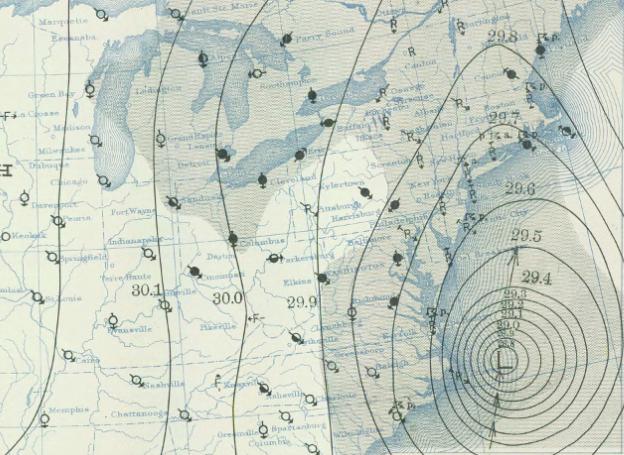
This is a picture of some Boston flooding after the New England Hurricane of 1938.

The Great Atlantic Hurricane (1944)
Another strong hurricane hit this region in September of 1944. This one was called the Great Atlantic Hurricane. The Great Atlantic Hurricane skirted along the eastern sea board, bringing 134 mph sustained winds at Cape Henry, VA. Hurricane force winds were experienced all along this storm track from North Carolina to Massachusetts, including a maximum gust of 109mph reported in Hartford, CT. Rainfall totals ranged from 6 to 11 inches. There was very good warning for this hurricane. Only 46 deaths were reported on land. However, one of the US destroyers, USS Warrington, sunk due to the storm, claiming 344 lives.
Hurricane Carol (1954)
Late August of 1954, the second year of named storms by the way, Hurricane Carol made landfall over Long Island, as a later deemed category 3 hurricane. Sustained winds of 80 to 100mph were recorded over much of eastern Connecticut and Massachusetts. Storm surges brought 8 to 10 feet of water into downtown Providence. Hurricane Carol was responsible for 60 deaths and 461 million dollars in damage. Below is a picture of Bristol, CT, and then below that is a track of Hurricane Carol.

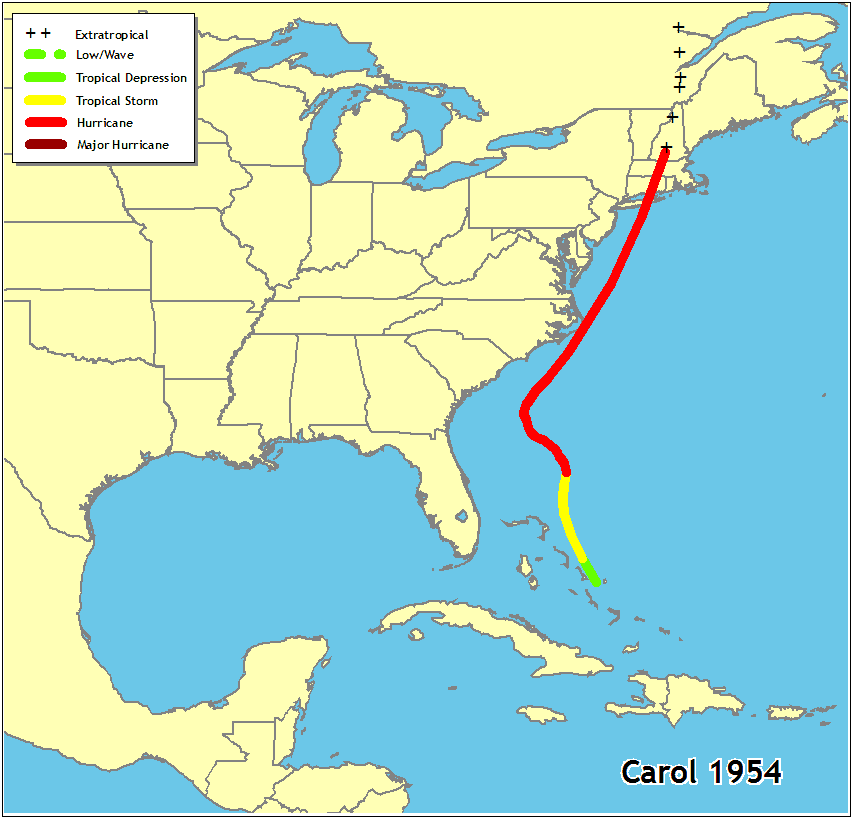
Hurricane Edna (1954)
Talk about your "One-two Punch". Hurricane Edna came just a week after Hurricane Carol hit. Luckily, Hurricane Edna did not take the exact same path as Hurricane Carol and only skirted Cap Cod as a category 3 hurricane. Below is the track of Hurricane Edna.

Hurricane Donna (1960)
First detected on August 29th, Hurricane Donna quickly became a hurricane on September 1st. Hitting the Florida Keys and Southwest Florida hard as a category 4 hurricane on September 11th. Hurricane Donna then continued up the coast hitting North Carolina as a category 3 hurricane and then New England as a category 3 hurricane as well. Hurricane Donna is the only hurricane to produce hurricane force winds in Florida, North Carolina, and New England. Hurricane Donna also was responsible for storm surge ranging anywhere from 5 to 13 ft. Heavy rain fall was also associated with Hurricane Donna.
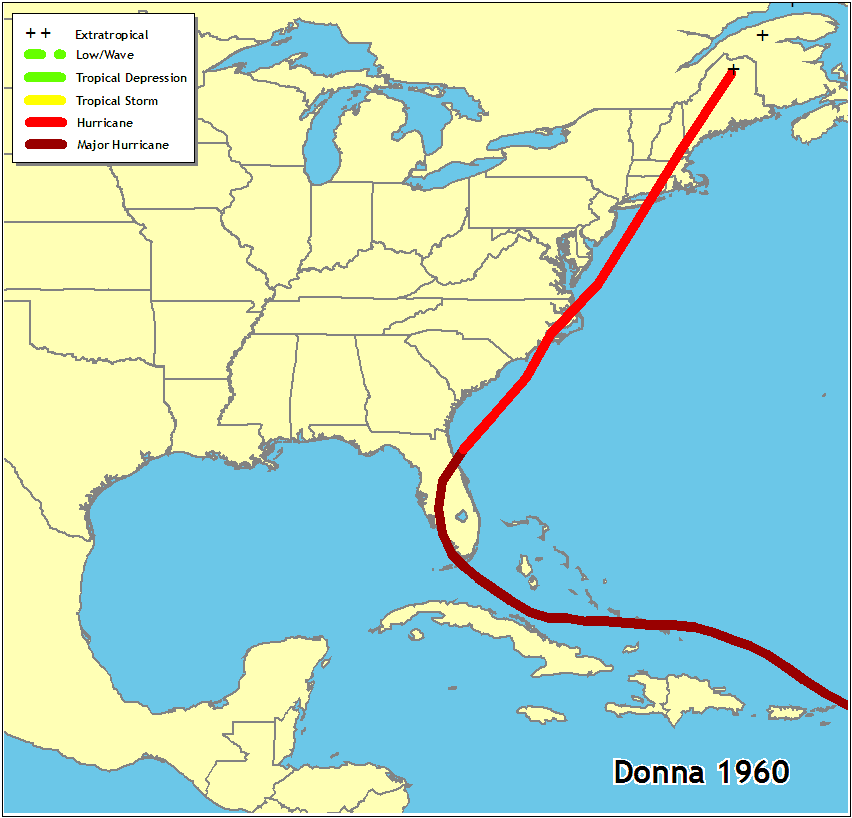
This picture below is from New England when Hurricane Donna hit.
Hurricane Agnes (1972)
Mid June was the first named storm of the season and was one to remember. Hurricane Agnes hit the Florida panhandle and moved through the southeast emerging back out into the Atlantic. Hurricane Agnes then made landfall again near the New York, New Jersey. Although, this hurricane wasn't known for it's winds. Hurricane Agnes is known for it's major rainfall. Inland flooding was the major problem was what made this hurricane so memorable.
Some of the areas hardest hit included the Harrisburg area which recorded over 15" of rain, Baltimore, and Scranton was another city that still has flood lines on buildings from this hurricane. Below is a picture from the Balitmore area after Hurricane Agnes hit.

Hurricane Bob (1991)
Hitting Rhode Island as a category 2 hurricane on August 19th, Hurricane Bob made quite the mark on the New England. Hurricane Bob was the second costliest hurricane at the time. Although, Hurricane Bob quickly weakened as it made landfall, stations did record 105mph winds.


Hurricane Floyd (1999)
Alright, so I would like you all to know Hurricane Floyd is one of the largest reasons I became a Meteorologist. Hurricane Floyd first made landfall in North Carolina with winds of 120mph and storm surge of 9 to 10ft. However, Hurricane Floyd was remembered for it's rainfall. Below is the track of the storm.
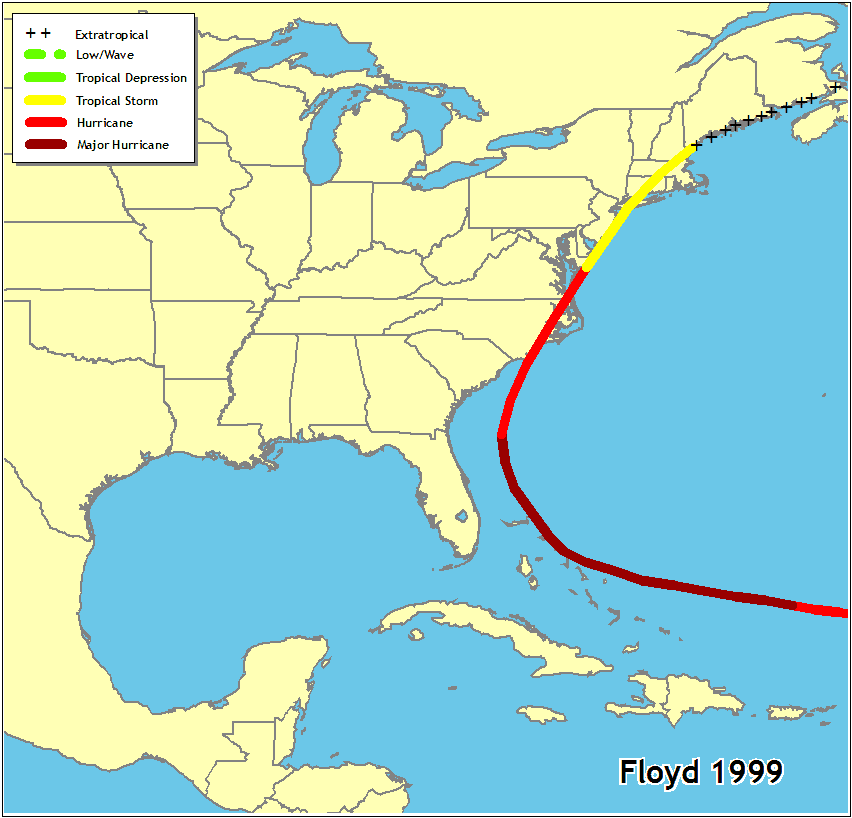
So why was this hurricane such an influence on me becoming a meteorologist, well it was the first storm that me and my dad tracked. Following whether or not the eye was going to reform was really exciting. Science was something that I already enjoyed and ever since that I have been super in tuned with what the weather is and what could and is going to happen. In the Lehigh Valley, where I lived at the time, we received 12 inches of rain. The east was in a drought and this Hurricane helped put a dent in it. Look at this picture from New Jersey.

Hurricane Irene (2011)
In late August, Hurricane Irene headed north, first hitting North Carolina with sustained winds at 85mph. It then continued northward skirted along the Jersey Shore and completely made landfall over Brooklyn. However, Hurricane Irene continued to reek havoc on New England. Strong winds and heavy rainfall devastated Vermont and New Hampshire.

Hurricane Sandy (2012)
Well, I know this hurricane is fresh in everyone minds. Hurricane Sandy, formed late in the season and when it made landfall was an extratropical system. This made it hard for meteorologist to post warnings, because there wasn't defined lines on this type of storm. The storm surge was 10 to 14ft. Hurricane Sandy was also one of the biggest hurricanes, being about 900 miles in diameter.
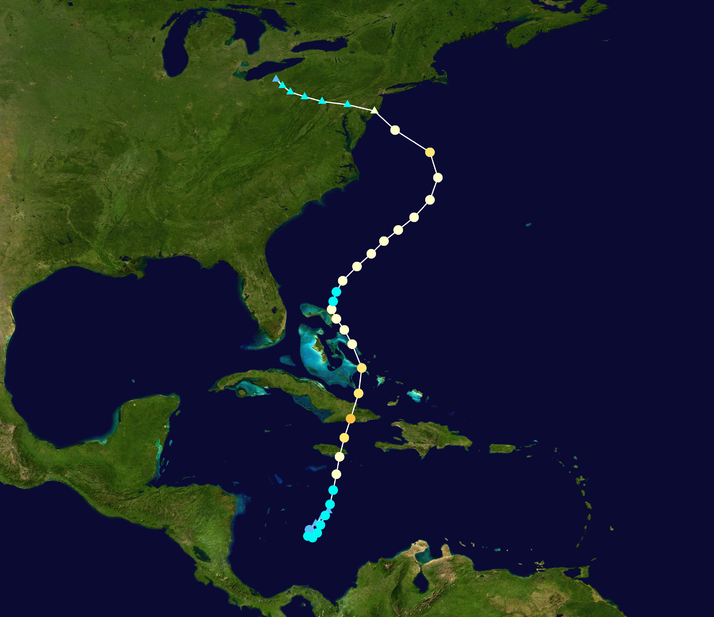
These are most of the major storms that have hit the Northeast in the past century. I highlighted from what I thought to be a reliable source, the National Hurricane Center, but if you are interested I did find a Wiki Page with more information on Hurricanes that hit the Northeast.
I did this big throwback to make people understand that big, powerful hurricanes have hit New England before and will probably hit the area again. That we keep having "record breaking" damage, but my last statement is there is a lot more people and a more things that are much more expensive in years past, so is it really record breaking?
Photo From:
wiki.com
hurricanehistory.org
boston.com
preservebristol.blogspot.com
swellinfo.com
lawerancevilleweather.com
rememberingagnes.blogspot.com
vtdigger.org
blog.nj.com
Info From:
nhc.noaa.gov
No comments:
Post a Comment